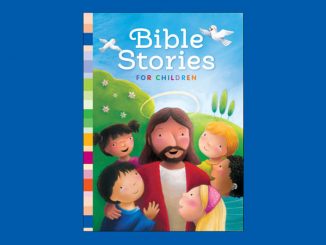
I always have “bell work” for children to begin as soon as they arrive in the classroom. These are short activities that engage early arrivals as the rest of the class arrives during the first 10–15 minutes. While students are doing their bell work, I can take attendance, check homework, hand back completed work, and attend to other tasks, like notes from parents. One of the easiest forms of bell work I have is Bible bell work, in which students look up Scripture passages. All we need are the Bibles and the citation for the upcoming Sunday Gospel (or whatever passage is chosen).
My Bible bell work supports several of my class goals. First, the children become familiar with how to look up and read a Bible passage. Second, most of the Scripture passages I have them read are the Gospel for the upcoming Sunday. Since we share and discuss the Gospel for the next Sunday, Bible bell work gives students the opportunity to read it for themselves before I read it aloud at our prayer table and increases their exposure to the passage.
I’m a second-grade catechist, so for this activity I do need to teach my students the basics of how to find passages in the Bible. I start with teaching them about how to find the books of the Bible using the Table of Contents. I then show the children how to locate the chapter and verse in the Scripture citation.
Before the students arrive, I write the Scripture citation on the board for the children to look up. The children take a Bible from the stack on the Bible cart. For the first few weeks as they are learning how to look up passages, I explain the process of finding the book, chapter, and verse. My classroom aide or I check to make sure they have found the correct passage before they read it. When they have found the passage, they raise their hands, and one of us checks that they are in the right place. After just a few weeks most students are proficient at finding the Bible passages.
Because I use the Sunday Gospel, the passage comes from the same book week after week. This also helps reinforce teaching about the liturgical year. The children’s Bibles we use have color indexing for each book; many of the students realize after a few weeks how to find that book quickly without needing to use the Table of Contents. (I let them discover that shortcut for themselves.) After the children have read the passage, they are free to explore and read the Bible until we move on to our next activity.
As the year goes on, I assign Scripture passages from any of the four Gospels, such as a Scripture cited in the lesson in our textbook. At least once by the end of the year, I assign a passage from a book other than the Gospels.
I’ve already noticed some unexpected benefits. Children learn how to work together, and those who arrive early help latecomers find Bible passages. They are excited to read the Bible. I’ve even noticed some students who were consistently late in arriving now show up earlier so that they can participate in this activity.
By beginning each class with Bible bell work, I’m planting a seed that I hope will grow into a lifelong habit of reading the Bible. How do you inspire a love for reading the Bible among your students?
Each session of Finding God: Our Response to God’s Gifts 2021 begins with Scripture, and new posters and blackline masters devoted to Bible passages are integrated into every lesson.




Thank You Cindy!……great way of learning! Keep up the Good News!
Thanks, John. I feel as if while I do hope that the children will remember many of the lessons they learn in my classes, this gives them a skill and hopefully a love of the Bible they can nuture their whole life long.